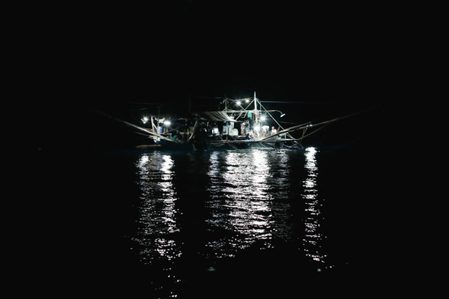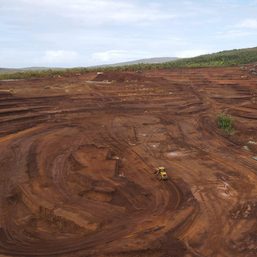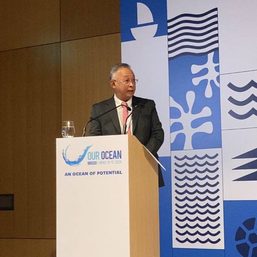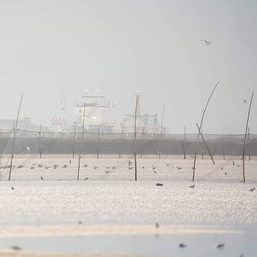SUMMARY
This is AI generated summarization, which may have errors. For context, always refer to the full article.
![[ANALYSIS] Why illegal dynamite fishing should be eradicated in the Philippines](https://www.rappler.com/tachyon/2021/07/TL-dynanite-fishing-1280.jpg)
The practice of dynamite fishing is illegal, but it has remained a lingering problem in the Philippines for some time now. Explosions from dynamite fishing destroy coral reefs and kill fish and their eggs and larvae, and injure other animals including marine mammals. Unfortunately, we have always assumed that this illegal practice has been stopped or at least significantly reduced, and expectedly its resulting impacts. However, this practice continues and has become a source of problems in open waters as well.
A recent scientific article that came out in the latest issue of Science Diliman characterized the underwater acoustic properties of dynamite blasts and its possible implications on marine mammals in the Philippines. All authors come from the College of Science of UP Diliman, namely Archie Veloria and yours truly (Lem Aragones) of the Institute of Environmental Science and Meteorology, and Daniella Hernandez and Dean Giovanni Tapang of the National Institute of Physics.
Background information
Many marine animals can produce and perceive sounds including marine mammals that rely on underwater sounds for their communication, orientation, and predation. Exposure to a variety of anthropogenic noise can serve as serious threats to these animals. That is why there are now many research programs worldwide focusing on the impacts of these human-made noises. Unfortunately, most of the studies have focused on large explosive loads. Characterization of the acoustic properties of small explosive loads like those from illegal dynamite fishing has not yet been conducted until this study.
What we did
To characterize the acoustic properties of dynamite blasts, we simulated the (single pulse) explosions by using confiscated explosives from local fishers and recording the sounds by using a calibrated hydrophone. We had access to four explosive paraphernalia, which comprised four trials. Blasts charge weights were also calculated for each explosive to determine sound pressure levels generated by the explosions at varying distances from the source. The simulation was performed in open waters with a depth of about 200 meters.
Who helped us facilitate the simulation of explosions?
We worked with the mandated agencies in this case, the Department of Agriculture-Bureau of Fisheries and Aquatic Resources (DA-BFAR), which has mandate over our aquatic resources, particularly BFAR Regional Office #1, and the Philippine Coast Guard (PCG) tasked with enforcing laws within Philippine waters. The confiscated paraphernalia came from the Northwestern Luzon District Command of the PCG, and the explosion simulation was also performed by their personnel. All logistical support in the field were provided by these agencies.
What we found
The release of strong pressure is not only limited to air. It can also happen to other elastic mediums such as water and even solids. In an underwater explosion, a shock wave also creates large underwater sound pressure that quickly deteriorates through time. The peak pressure varied in all four trials. This means that charge weights were highly variable. This is true as the confiscated explosives came from different fishermen, and that they obviously have their own ways of formulating these paraphernalia.
We also identified dominant frequencies and determined sound pressure levels (SPLs) at peaked frequencies. The SPLs from the recordings were acquired to enable us to analyze the strength of the acoustic waves generated from the simulated explosions and relate them to possible injuries to marine mammals. By using a set of criteria for marine mammal noise exposure originally proposed by renowned acousticians in 2008 and a SPL range classification (using audiograms) established by another scientist in 2012, we were able to conclude that even single pulse dynamite blasts can have debilitating effects on our local marine mammals. Similarly, from our results, we were able to establish a safe zone of about 150 meters away from the source explosion.
Possible implications on our local marine mammals
Based on our previous and ongoing studies, we have a diverse assemblage of marine mammals in the Philippines. So far, 30 cetaceans and 1 sirenian – the dugong – have been recorded within our waters. These cetaceans can be grouped according to their estimated auditory bandwidth following the established criteria: baleen whales as the low frequency group (7 Hz to 22 kHz), while most odontocetes (those with teeth) as the mid frequency group (50 Hz to 160 kHz), and kogiids as the high frequency group (200 Hz to 180 kHz). The SPL values we generated (150 to 160 dB), even though less than the prescribed threshold for injury from single pulses explosion (230 dB), can still cause behavioral changes and possible temporary threshold shifts to these animals. This can be possibly manifested in disorientation and masking of sounds, reducing their bio-acoustics capacity.
Further, the 150-meter safe zone for our marine mammals is a way for us to imagine the extreme potential impacts of these illegal (dynamite) fishers, as it is easy to assume that they do not look that far ahead when they throw these explosives into the water to gather their targeted school of fish. Furthermore, these marine mammals are often underwater and may be quite inconspicuous even when they break the surface to breathe. The occurrence of these incidents must be common than rare.
The impacts of dynamite fishing are most likely far more expansive and extensive than we initially assumed, notwithstanding that our local marine mammals are already either threatened, vulnerable, or endangered. Based on the Philippine Marine Mammal Stranding Network (PMMSN) database, 50-60% strand alive. This is quite an unusually high rate of live stranding. The common issues of “listing,” (their dorsal fin leaning towards one side) often manifested by live stranders, especially those with apparent good body condition, could be recent results of dynamite fishing – a sign of disorientation. Those with signs of emaciation (with peanut-shaped heads) on the other hand could have also suffered some impacts from dynamite blasts, but chronically or in a protracted sense, as the blasts could have reduced their capacity to find prey as their bioacoustics have been compromised.
The dugongs, which rely on seagrass, are found more inshore than most cetaceans. They can be more prone to being victimized by these illegal acts than initially assumed. Based on PMMSN’s database, most if not all stranded adult dugongs were already dead (beached) and mostly with good body condition as well. This could imply that the impact that caused the animal to die was more acute. The data we got from BFAR regarding their apprehensions of dynamite fishers occurred in waters 50 m from shore to 12 km away.
What can we do?
Lawyer Asis Perez, former National Director of DA-BFAR put together a set of programs to battle Illegal, Unreported, Unregulated (IUUs) fishing in the Philippines during his term. Nowadays, the DA-BFAR all over the various regions nationwide have a Fisheries Resource Protection Group and improved floating assets (patrol boats). Perez told me that “there are already laws out there; we just need to improve their implementation.”
This has been pursued further by the current DA-BFAR National Director, former PCG Commodore Eduardo Gongona. Similarly, Benjamin Cabrido Jr, a prominent environmental lawyer, told me that “based on this scientific article there is a need to revise the RAs 9147 and 8550 (amended as RA 10654) as the incarceration period, currently 5-10 years, is too short given the destruction that this illegal act will bring.” Further, he suggested that “law enforcers should prosecute dynamite fishers under the Illegal Use or Possession of Explosives Act-RA 9516 (formerly PD 1866), wherein the penalty is reclusion perpetua, and with no bail.”
Moving forward
We must reduce the threats that these marine mammals are facing in the wild. The main ingredient used by fishermen for these dynamite explosives is ammonium nitrate, an agricultural fertilizer. Similarly, the blasting caps of these explosives can be taken from dynamite for mining and supplies for military purposes. There must be ways to regulate these items to ensure that the few malicious and misguided people cannot access them.
I hope, with this article, I was able to communicate why we need to totally eradicate this illegal form of fishing using dynamite explosives. – Rappler.com
Lemnuel V. Aragones, PhD is a professor at and former director of the UP Institute of Environmental Science and Meteorology. He is also president of the Philippine Marine Mammal Stranding Network. He has been working on marine mammals and environmental science for 30 years.
Add a comment
How does this make you feel?
![[WATCH] Face masks: A new threat to marine life](https://i.ytimg.com/vi/qSQ40pMdw8E/hqdefault.jpg)



















There are no comments yet. Add your comment to start the conversation.